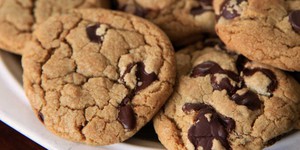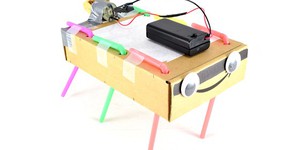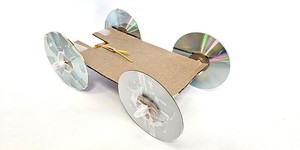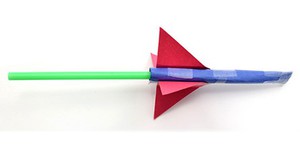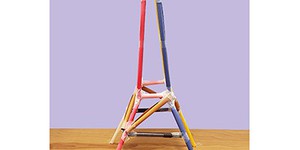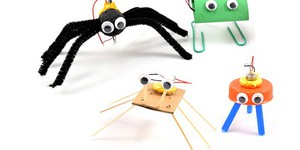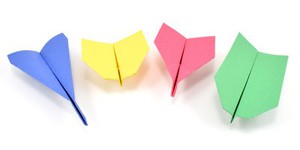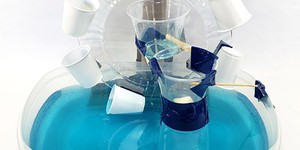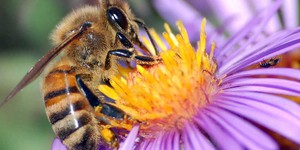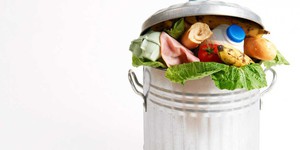Fourth Grade Lesson Plans (64 results)
Science Buddies' fourth grade science projects are the perfect way for fourth grade students to have fun exploring science, technology, engineering, and math (STEM). Our fourth grade projects are written and tested by scientists and are specifically created for use by students in the fourth grade. Students can choose to follow the science experiment as written or put their own spin on the project.
For a personalized list of science projects, fourth graders can use the Science Buddies Topic Selection Wizard. The wizard asks students to respond to a series of simple statements and then uses their answers to recommend age-appropriate projects that fit their interests.
Let us help you find a science project that fits your interests, with our Topic Selection Wizard.|
Select a resource
Sort by
|
Lesson Plan
Grade: 4th-8th
3 reviews
The problems with using fossil fuels starts with extraction. In this activity, students "mine" chocolate chips out of cookies to demonstrate the effects mining can have on habitats.
Read more
NGSS Performance Expectations:
Featured
Lesson Plan
Grade: 6th-8th
7 reviews
Junkbots are easy-to-build robots that you can make using a simple circuit and some recyclable materials. In this lesson, your students will learn about engineering design as they compete to build the fastest robot. No previous robotics experience is required!
Read more
NGSS Performance Expectations:
Lesson Plan
Grade: 3rd-5th
10 reviews
In this fun engineering lesson plan, your students will build rubber band-powered cars using readily available craft supplies. The challenge is to build a car that goes as far as possible while making careful use of materials.
Middle school and
high school
versions of this lesson plan are also available. You can enter your students' designs in the 2024 Science Buddies Engineering Challenge for a chance to win a cash prize for your school.
Note for K-2 teachers: you can do this…
Read more
NGSS Performance Expectations:
Lesson Plan
Grade: 3rd-5th
17 reviews
This lesson will introduce your students to the scientific method using a fun, hands-on activity.
A middle school version of this lesson plan is also available.
Read more
NGSS Performance Expectations:
Lesson Plan
Grade: 3rd-5th
5 reviews
Teach your students about the engineering design process with this fun lesson plan. They will design and build the tallest possible tower using nothing but paper and tape, but there's an additional twist on this classic activity. The tower must support a heavy weight at the top without collapsing! Teachers, note that middle school and high school versions of this lesson plan are also available. The 2021 Engineering Challenge is over, but you can still try this fun lesson with your students,…
Read more
NGSS Performance Expectations:
Lesson Plan
Grade: 3rd-5th
3 reviews
Vibrobots are tiny robots powered by a vibrating motor, like the type found in cell phones. In this lesson plan, your students will learn about engineering design as they build their own vibrobots from craft materials. No previous experience with robots is required!
Read more
NGSS Performance Expectations:
New
Lesson Plan
Grade: 6th-12th
Create a two-part system for filtering greywater. Teams will focus on communication and systems engineering as they build separate components to filter solid and liquid waste and then combine them into one device.
Learning Objectives
Students will:
Consider the potential effects of drought and how greywater could be part of the solution.
Design a system for filtering out solid waste or liquid waste.
Consider effective communication strategies with their team.
Collaborate on their design…
Read more
Lesson Plan
Grade: 3rd-5th
18 reviews
Are paper airplanes a nuisance in your classroom? They don't have to be! Those distractions can be a constructive learning opportunity: use them to teach your students about the engineering design process. In this fun lesson, you will be the "customer" ordering a paper airplane, and your student teams will be engineering companies that will manufacture planes. Before they start making planes, they need to define the criteria and constraints of this engineering problem.
Read more
NGSS Performance Expectations:
Lesson Plan
Grade: 4th-8th
2 reviews
What would your students do if your town's water supply was cut off due to an equipment failure or natural disaster? Inspired by
Global Problem Solvers: The Series,
in this lesson plan they will tackle a real-world engineering challenge by building a prototype of a device that can manually pump water during an emergency. They will also think like entrepreneurs and come up with a business plan for how their device could be produced, sold, and used in the real world.
This lesson is one of…
Read more
NGSS Performance Expectations:
Lesson Plan
Grade: 3rd-7th
5 reviews
In this activity, students learn about plant reproduction and use real data to construct explanations about which flowers are the most attractive to different pollinators.
Read more
NGSS Performance Expectations:
Lesson Plan
Grade: 3rd-11th
3 reviews
Have you ever thrown away food after a meal? Have you ever thrown away a whole piece of food? What are some of the reasons you threw away that food?
During this Food Waste Audit, students will explore their own impact on our food system. Students will brainstorm solutions to reduce their food waste and be challenged to try out their solution!
Read more
NGSS Performance Expectations:
Lesson Plan
Grade: 4th-12th
By conducting their own survey of an outdoor environment, students will examine a method for assessing litter, identify how humans impact the environment, and design solutions for preventing marine debris.
Read more
NGSS Performance Expectations:
|
Explore Our Science Videos
Slow Motion Craters - STEM Activity
Solubility Science – STEM Activity
Jumping Candle Flame Experiments – STEM activity


